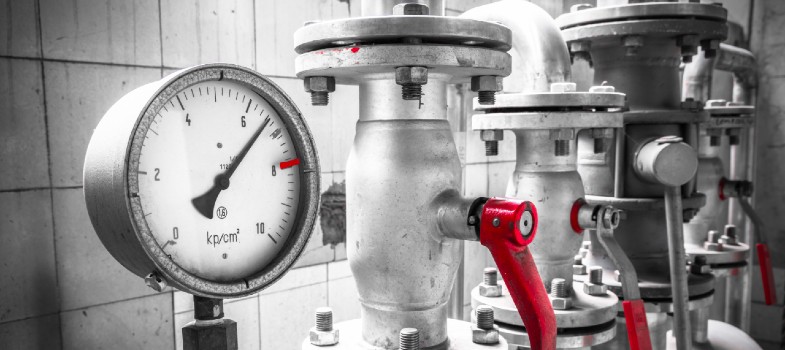Transcript: Membrane process parameters
Let’s talk about the fundamental membrane process operating parameters, because operation of a membrane process is basically defined by six key parameters, with a few more being derived from these six.
So here’s the membrane, with surface area A and a flow Qp of permeate passing through it. The ratio of the permeate flow to the membrane surface area is the flux. The flux usually takes units of litres per square metre per hour, LMH. This flow results in a pressure across the membrane referred to as the transmembrane pressure, or TMP in bar. The flux to pressure ratio is then defined as the permeability in LMH per bar. Note that these aren’t SI units: they’re just the ones which are the most convenient to use.
Membranes often operate in the crossflow mode, with the retentate flow across the membrane generating turbulence which promotes the permeation of water through the membrane. If the membrane is oriented vertically, then turbulence can be promoted using air to scour the membrane surface. Air flow rate is defined in units of normal-metres per hour, where a normal-metres cubed refers to metres cubed of air at standard temperature and pressure. The ratio of the air flow to the membrane surface area is referred to as the specific aeration demand, SAD. SAD can be defined with reference to either the membrane area in normal-metres cubed per hour per metres squared membrane area, or the permeate flow, in which case it takes units of normal-metres cubed per metres cubed. This parameter is useful because it's directly proportional to the aeration energy per metres cubed of permeate, and is simply SADm divided by the flux. So these are the four key hydraulic parameters defining membrane operation.
However, there is never complete conversion of feed to permeate by a membrane. If we consider flow through a membrane generating the retentate waste stream and a purified permeate stream, the overall membrane performance is defined in terms of the respective concentrations and flows in the feed, retentate and permeate. The ratio of the permeate flow to the feed flow is referred to as the recovery, or conversion, given as a percentage.
The effectiveness of the purification capability of the membrane is given by the ratio of the permeate to feed concentrations, and is termed the percentage rejection. Sometimes, the performance is expressed in terms of the concentration factor CF, the ratio of the retentate to feed concentration. And if rejection is close to 100% - which it often is, then the CF is given by 1/(1-R).
Last modified: Friday, 19 June 2020, 1:44 PM
